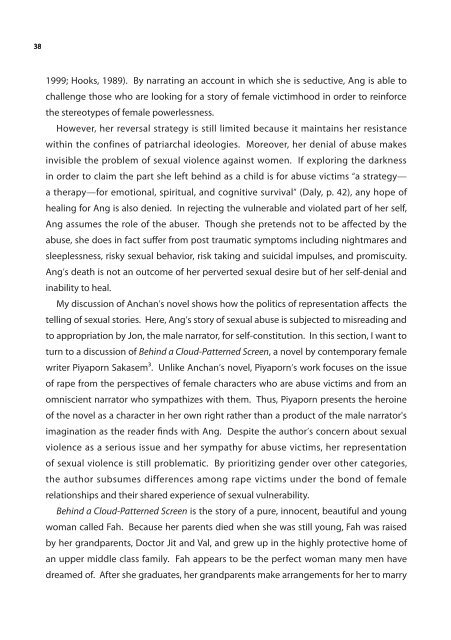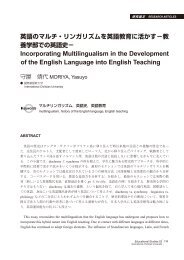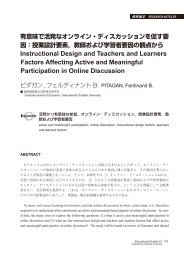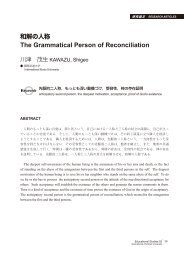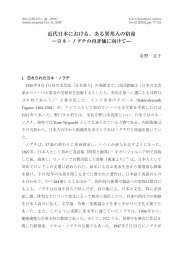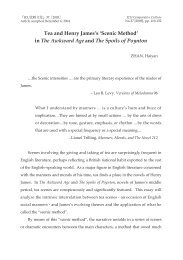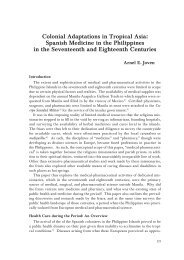Untitled - subsite - å½éåºç£æ大å¦
Untitled - subsite - å½éåºç£æ大å¦
Untitled - subsite - å½éåºç£æ大å¦
You also want an ePaper? Increase the reach of your titles
YUMPU automatically turns print PDFs into web optimized ePapers that Google loves.
38<br />
1999; Hooks, 1989). By narrating an account in which she is seductive, Ang is able to<br />
challenge those who are looking for a story of female victimhood in order to reinforce<br />
the stereotypes of female powerlessness.<br />
However, her reversal strategy is still limited because it maintains her resistance<br />
within the confines of patriarchal ideologies. Moreover, her denial of abuse makes<br />
invisible the problem of sexual violence against women. If exploring the darkness<br />
in order to claim the part she left behind as a child is for abuse victims a strategy<br />
a therapyfor emotional, spiritual, and cognitive survival (Daly, p. 42), any hope of<br />
healing for Ang is also denied. In rejecting the vulnerable and violated part of her self,<br />
Ang assumes the role of the abuser. Though she pretends not to be affected by the<br />
abuse, she does in fact suffer from post traumatic symptoms including nightmares and<br />
sleeplessness, risky sexual behavior, risk taking and suicidal impulses, and promiscuity.<br />
Angs death is not an outcome of her perverted sexual desire but of her self-denial and<br />
inability to heal.<br />
My discussion of Anchans novel shows how the politics of representation affects the<br />
telling of sexual stories. Here, Angs story of sexual abuse is subjected to misreading and<br />
to appropriation by Jon, the male narrator, for self-constitution. In this section, I want to<br />
turn to a discussion of Behind a Cloud-Patterned Screen, a novel by contemporary female<br />
writer Piyaporn Sakasem³. Unlike Anchans novel, Piyaporns work focuses on the issue<br />
of rape from the perspectives of female characters who are abuse victims and from an<br />
omniscient narrator who sympathizes with them. Thus, Piyaporn presents the heroine<br />
of the novel as a character in her own right rather than a product of the male narrator's<br />
imagination as the reader finds with Ang. Despite the authors concern about sexual<br />
violence as a serious issue and her sympathy for abuse victims, her representation<br />
of sexual violence is still problematic. By prioritizing gender over other categories,<br />
the author subsumes differences among rape victims under the bond of female<br />
relationships and their shared experience of sexual vulnerability.<br />
Behind a Cloud-Patterned Screen is the story of a pure, innocent, beautiful and young<br />
woman called Fah. Because her parents died when she was still young, Fah was raised<br />
by her grandparents, Doctor Jit and Val, and grew up in the highly protective home of<br />
an upper middle class family. Fah appears to be the perfect woman many men have<br />
dreamed of. After she graduates, her grandparents make arrangements for her to marry


